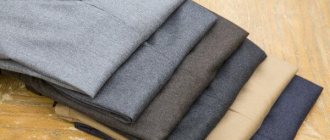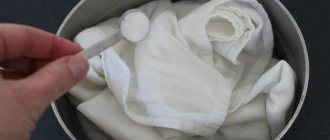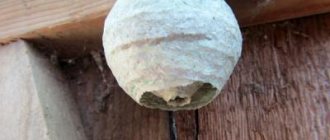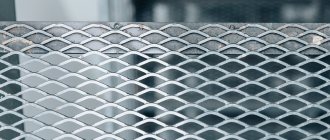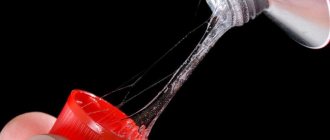Elseda Big Encyclopedia of Depilation. Starting a business in the field of depilation from “A” to “Z”
- Choosing a place to work: home, office rental, salon and others
- How and when to open a hair removal office
- What you need
- How can a novice master get a job in any salon?
- Legal aspects of opening a depilation salon for an individual entrepreneur or LLC? Selection of registration and legal form
- Choosing a tax system for a hair removal salon
- Selecting a room
- How much materials should I buy?
- What equipment is needed?
- Minimum set of office equipment
- Who to hire at the initial stage?
- Room rental + deposit
- Attracting clients for depilation and sugaring How to attract clients for depilation. Plan for attracting clients.
The question “how to remove depilatory wax from clothes” usually arises among professionals. The composition may accidentally drip onto the uniform during the procedure. A waxy stain may also occur due to contact with the client's skin being treated. For example, a person may involuntarily jerk or touch the technician’s overalls when changing position on the couch. Sometimes the question “how to remove wax from clothes after depilation” is also asked by girls who independently carry out the procedures at home. Lack of practice and the inconvenience of applying wax to your own skin increases the risk of accidental contamination. Let's figure out whether it is possible to solve this problem and save the damaged fabric.
What are the dangers of wax stains?
Wax marks are complex stains. The difficulty of removing such stains is due to the composition.
For candles, paraffin, stearin or palm wax with a fat base is used. Such substances do not dissolve in water, even hot water. Because of this, regular washing will not always help.
An additional difficulty is created by the fact that the wax hits the fabric in a hot, molten state. It penetrates very quickly into the fibers and hardens, gluing them together.
You can clean off such a drop with a non-sharp knife, spatula or other suitable object . But this will leave a greasy, noticeable mark on the material itself, which is much more difficult to remove.
Another danger of candle drips lies in the dyes used. Candles with unusual shades are made using durable color pigments. Spilled wax in this case can leave behind not only a greasy mark, but also stain the fabric.
How to remove using improvised means at home?
Regular laundry detergents will not help deal with stains . To remove wax marks, you will need other techniques. All of them are not complicated. But they require careful handling.
Warming up with an iron
This method can be recommended for dense materials. First, the convex part of the wax drop should be removed from the surface of the fabric by scraping movements with a spatula or scraper.
For further work you will need:
- a pair of cotton napkins;
- White paper;
- iron.
Work order:
Heat the iron. The heating temperature should not exceed the maximum indicated on the label for the item being processed.- Turn off steam supply.
- Place one of the prepared cloth napkins on the ironing board.
- Place the affected item on top so that the stain is on top.
- Cover the area with the stain with white paper.
- Start ironing.
- After the heated wax has saturated the paper, it is removed and a new one is used.
- Repeat the treatment until greasy stains appear on the paper.
Remaining traces on the material can be treated with a stain remover.
Remove with turpentine
If the option of heating the spot cannot be implemented for some reason, you can use turpentine.
The procedure for carrying out work in this case:
- soak a cotton swab with turpentine;
- carefully treat the affected area of the fabric with blotting movements;
- after the mark has disappeared, wash the item in the usual way at the maximum permissible temperature;
- rinse.
A similar treatment can be carried out with refined gasoline instead of turpentine.
Freezing
It is very difficult to remove wax from complex, textured fabric surfaces. Most recipes are not applicable in this case, as they can aggravate the situation - enlarge the stain.
To achieve the effect, the item can be frozen , which will lead to the fragility of the paraffin or wax stain. In winter, you can simply take the item out into the cold. But this method is only suitable for winter.
At other times, soiled clothing should be folded so that the stain is on top and placed in a plastic bag in the freezer. As soon as the wax freezes and becomes brittle, you need to break it with your hands and clean off all the pieces with a brush.
Dishwashing liquid
For fabrics that cannot be exposed to heat or freezing, a dish soap-based cleaning method can be used.
How to use:
- Apply a small amount of undiluted dishwashing detergent to the affected area.
- Rub lightly.
- Leave the item of clothing to sit for 10 hours.
- Wash the item.
If washing is done by hand, pay special attention to the area with the stain.
How to remove with special compounds?
In addition to improvised means that you can find around the house, you can use effective preparations specifically designed to eliminate this type of contamination.
Dr. Beckmann Stain Remover
A special product is suitable for removing greasy marks left after wax removal. The drug contains surfactants that cope even with complex contaminants (up to 15% of nonionic surfactants and non-surfactants).
In addition to wax marks, the product can cope with greasy stains left over from various dishes, sauces, dressings, etc. The stain remover can be used to clean colored and white clothes and fabrics. Contains no chlorine or phosphates.
Application:
- Apply stain remover liberally to the stain.
- Leave for a quarter of an hour.
- Wash as usual.
If the item cannot be washed, then after treating it with a stain remover and leaving it for 15 minutes, blot the affected area with a damp cloth.
Price – about 200 rubles per bottle.
Spartan Chewing Gum Remover
The principle of operation of this product differs from the previous one . The effectiveness of Remover is determined by its ability to freeze the site of contamination without the use of a refrigerator.
The drug is available in an aerosol can. In addition to wax, Chewing Gum Remover can be used to remove chewing gum and other sticky substances from fabrics.
A remover is used by spraying . Once the wax has frozen, you can break it with your hands and brush it off the fibers. The cost of the aerosol is from 320 rubles.
SAPUR FREEZE
SAPUR FREEZE also works on the freezing principle. After the drug has been sprayed onto the stain, the wax must be cleaned off intensively, but without damaging the material. Price – about 700 rubles.
Removing greasy marks
After you have managed to remove the wax from the surface of the product, you will probably see a greasy stain on it. You can remove it using the following methods:
- Using talc (powder). Sprinkle the powder on the contaminated area and place any heavy object on top. After 10 minutes, scrub the treated area with a brush and then rinse the clothes.
- Soda slurry. Mix 2 tablespoons of baking soda with a spoon of warm water. Apply the resulting mixture to the stain and leave for 15-20 minutes, then scrub with a brush. The final stage is washing in the usual way.
- Micellar water. Makeup remover attracts oily dirt, so it is also suitable for removing wax stains. Soak a cotton pad in micellar, apply it to the stained area for 5 minutes and make sure you get the desired result.
How to clean different types of fabrics?
When removing stains of any origin, including those caused by paraffin and depilatory wax, it is necessary to take into account the type of material and its density . It is also important to take into account the composition of the fabric when using special commercial cleaning products.
Cotton, linen
Thick linen and cotton can be cleaned using an ironing recipe. If the material is thin, then the heating method can be used to a limited extent, using a hair dryer or steam generator for heating.
Synthetics
Artificial materials do not react well to heat , so you should not use a hair dryer, much less an iron. Temperature exposure can lead to damage to the item, even to the point of melting the material.
In this case, turpentine will help remove wax. Another option is to treat with dishwashing detergent.
Jeans
Denim clothing often suffers from various stains. The advantage of the material is its strength. Treatment with dishwashing detergent will help remove stains from the fabric.
For this:
Apply literally a few drops of dish gel to the stain without moistening the stain with water;- rub;
- prepare a soaking solution using detergent;
- soak jeans for an hour;
- wash;
- if necessary, repeat the process.
Also, for denim material, a freezing method is acceptable, which makes it quite easy to deal with the problem. The heat method using an iron will be more effective at removing beeswax marks.
Wool
Wool is a high-maintenance material that should not be exposed to intense exposure . To remove the stain, in this case, it is recommended to use gentle methods. A recipe based on dish detergent satisfies these requirements.
The process must be completed by washing using an appropriate detergent.
Suede, velor, velvet
Velor, suede and velvet have a fleecy surface that is not easy to clean. When hot paraffin hits such a fabric, it quickly spreads throughout the pile and reaches the base.
Freezing can give good results. You can also use heat for suede, but very carefully, avoiding direct contact of the heated sole of the iron with the pile.
The iron is placed so that its sole is vertical. A section of suede covered with a cotton napkin is leaned against the iron and put aside . As soon as the paraffin becomes soft, it should be removed with a napkin.
You can also heat the suede over steam to soften the wax. After this, remove with a dry cloth and clean.
Leather
Clothes made from genuine leather are less susceptible to wax. A stain that gets on the outside can be removed by keeping the item in the freezer .
After this, the stain is broken by hand and cleaned off. Remaining paraffin is washed off with a damp cloth.
If after treatment a trace of contamination remains, this area should be wiped with purified gasoline or turpentine. Finish the treatment by wiping the surface dry.
Fur
One of the best ways to clean fur is freezing. A stain that has become brittle can easily crumble without damaging the appearance and structure of the fur.
Satin, organza, silk
Only delicate processing methods will help to clean delicate fabrics . One option is to wash in soapy water. Another way is to use dishwashing detergent diluted in water.
After applying the preparation to the fabric, you should not rub or wrinkle the item intensively. All actions should be as gentle as possible on the fabric.
Synthetics
Clothes made of synthetic materials deteriorate under the influence of high temperatures, so immersing them in boiling water or ironing them with a hot iron is strictly prohibited. Look at the label, which indicates the permissible temperature conditions for ironing and washing.
How to remove regular wax from synthetic fabric:
- Soak the product in hot (not higher than 50˚ C) clean water.
- Once the wax is soft, gently blot it with a napkin or cloth.
- Wash your clothes as usual, in the washing machine or by hand, with detergent - this will remove any remaining dirt.
To clean items made of organza and other delicate fabrics, the ironing of which is prohibited by the manufacturer, do not use elevated temperatures. To remove wax stains from such products, use an organic solvent:
- Apply the product to a cotton pad and rub it over the contaminated area.
- Wash the item using detergent and rinse thoroughly.
Advice! Before using an organic solvent, test its effect on an inconspicuous area of clothing. If the structure of the material or its color has changed, use a special stain remover.
What can't be done and why?
Removing wax from fabrics comes with many limitations. The type and composition of the fabric, its color and some other factors should be taken into account.
When cleaning, it is advisable to remember a number of prohibitions:
You cannot use the recipe with ironing if the spilled wax is colored. Heat can cause the dye's color pigment to be absorbed further into the fabric and set, making the stain permanent.- Do not use the ironing method for thin fabrics that are not resistant to heat.
- Do not try to cut off a drop using a sharp kitchen or stationery knife. By doing this, you can easily damage the material itself.
- You should also not scrape/scratch the stain too intensively, as this can also ruin the item - lead to fraying, thinning or tearing of the fabric.
Recommendations
Expert advice will help you deal with wax on clothes and fabrics
- Before using one of the recipes, you must carefully remove the wax blot protruding above the surface.
- A trace of colored paraffin can be treated with undiluted medical alcohol. This is done using a napkin using blotting movements. The work must be carried out carefully so as not to smear the paint even more.
- Fabrics with unstable dyeing deserve special attention. For them, the best option is mechanical cleaning. After removing the top layer of paraffin, talc can be poured onto the stained area and after a while, when it absorbs the dirt, it is removed. The manipulation can be repeated.
- When cleaning wax from upholstered furniture, it is necessary to take into account the composition of the upholstery fabric. As a means of freezing for oversized items, you can use ice cubes placed in a plastic bag.
Useful information about ways to clean wax from various surfaces is in this section.
How to remove depilatory wax from clothes
Depilatory wax also leaves stains.
Many women use wax for depilation. In addition to paraffin, this cosmetic product contains synthetic and wood resins, as well as various oils. It is difficult to remove stains that appear on clothes due to careless handling of depilatory wax. But there is a proven method that allows you to completely clean your clothes and remove this difficult stain.
Apply a few drops of vegetable oil to the stain and leave the product for 10-15 minutes, allowing the wax to soak in. After this, wash the dirty area with Fairy and place the item in the drum of the machine for further processing.
